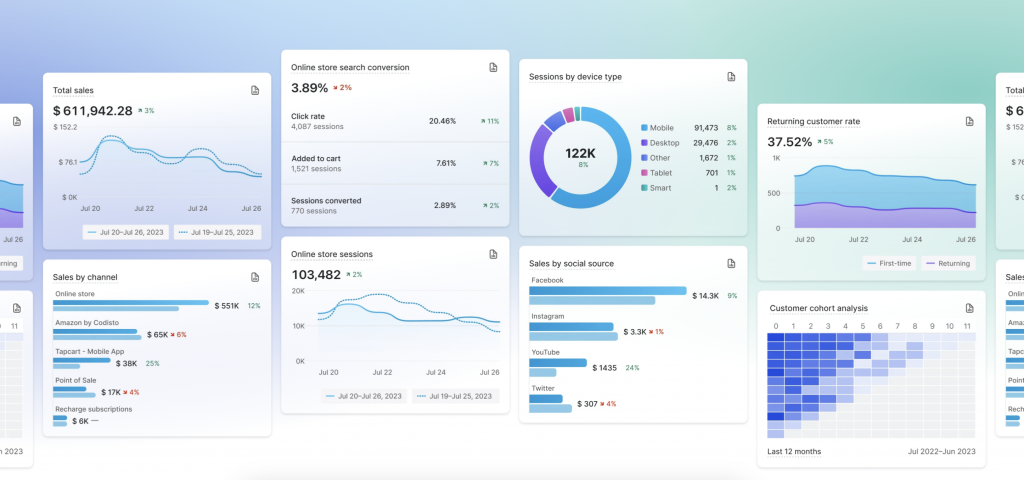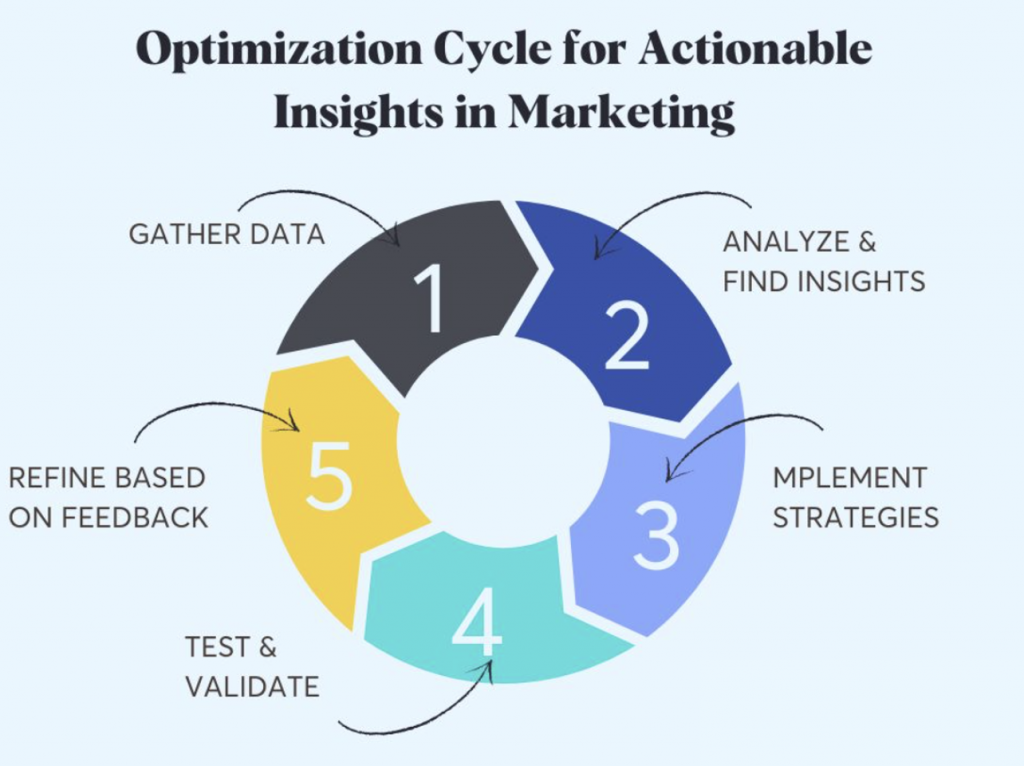blog»Digital Marketing»Enhancing Shopify with Ptengine: A Guide to Superior Data Tracking

Enhancing Shopify with Ptengine: A Guide to Superior Data Tracking
2024/04/23
You can read this article in about 19 minutes
Introduction
In the fast-paced world of e-commerce, understanding your data is key. Ptengine steps in to boost what Shopify already does well. Shopify makes it easy for online stores to get up and running, and it offers basic tools to track sales and customer behavior. But Ptengine takes it further, helping you see exactly how customers interact with your site, what makes them buy, and where you might be losing sales.

With Ptengine, you get more than just numbers. You get insights you can actually use to improve your store. By adding Ptengine to Shopify, you get a clearer picture of your data. This helps you make better business decisions, grow your sales, and keep customers happy.
This introduction will show how Ptengine complements Shopify’s tools, giving store owners the power to make smart decisions that lead to more growth and better customer satisfaction.
Understanding Data Tracking in E-commerce
Understanding the ins and outs of data tracking is essential for any online store. Knowing where your customers come from, what they look at, and what they buy helps you make smart changes that boost sales. For many Shopify store owners, the platform’s built-in analytics provide a good starting point. These tools track basic metrics like page views, visitor counts, and general sales data. This information is useful for everyday decisions and understanding broad customer trends.
However, this is just the surface. To really understand customer behavior, you need to dig deeper. That’s where Ptengine comes in. Ptengine adds layers of insight by tracking more detailed interactions. This includes which buttons customers click, how far they scroll down your pages, and what items they hover over before deciding to buy or not. This kind of data is invaluable because it tells you not just what customers are doing, but how they are interacting with your site at a granular level.

For example, if you notice that many visitors leave the checkout page before completing a purchase, there might be something discouraging them. With Shopify’s data, you might see the drop-off rate, but Ptengine can show you if these customers hesitated on the payment method selection or got stuck at a particular step. This allows you to make specific changes, like simplifying the payment process or providing more payment options, which could directly increase your conversion rate.
Key Metrics for E-commerce Stores:
- Conversion Rate: Measures the percentage of visitors who make a purchase. High conversion rates indicate effective marketing and site design.
- Average Order Value (AOV): The average amount spent each time a customer places an order. Increasing AOV can significantly impact revenue.
- Customer Acquisition Cost (CAC): The cost of acquiring a new customer. Keeping this low relative to AOV is crucial for profitability.
- Cart Abandonment Rate: The rate at which visitors add items to their cart but do not complete the purchase. Reducing this can directly increase sales.
- Customer Lifetime Value (CLV): The total revenue a business can expect from a single customer over the course of their relationship. Increasing CLV is vital for long-term business success.
In summary, while Shopify’s analytics are great for general insights, Ptengine’s detailed tracking helps you understand the finer details of customer behavior. This deeper understanding enables you to tailor your store to meet customer needs more effectively, turning casual browsers into loyal customers.
Shopify’s Native Tracking Capabilities
Shopify, a leading e-commerce platform, provides essential tools that help store owners get a basic understanding of their online business. These native tracking capabilities are crucial for managing day-to-day operations and making informed decisions. Shopify’s analytics dashboard offers insights into sales trends, traffic sources, and customer behavior, which are foundational for any e-commerce store.

The native tools provided by Shopify track various metrics such as total sales, number of orders, and overall site traffic. These metrics give a snapshot of business health and are accessible through an easy-to-use interface. For example, Shopify’s reports can show which products are selling the best and which marketing channels are driving the most traffic. This information is vital for adjusting marketing strategies and inventory management.
Additionally, Shopify’s tracking includes conversion rate analysis, which helps store owners understand how many visitors are converting into customers. This is particularly useful for identifying the effectiveness of promotions and discounts. Shopify also offers an abandonment cart recovery feature, which automatically tracks and emails customers who have left items in their cart without completing a purchase. This helps in recovering potential lost sales.
However, while Shopify provides robust tools for basic tracking, there are nuances and deeper insights that might be missed without the help of specialized analytics tools like Ptengine. For instance, Shopify might tell you that a customer abandoned their cart, but it won’t provide detailed insights into why the customer left without purchasing. Did they find the checkout process too complicated? Were there not enough payment options?
Understanding these subtleties can dramatically impact the effectiveness of your store’s operations and marketing efforts. Thus, while Shopify’s native capabilities lay a strong foundation, integrating with a tool like Ptengine can unlock a deeper understanding and optimize your e-commerce strategy more effectively.
How Ptengine Enhances Shopify Data Tracking
While Shopify provides a solid foundation with its native analytics tools, Ptengine offers enhancements that allow for a deeper understanding of customer behavior. This chapter explains how to integrate Ptengine’s advanced features with Shopify’s data, creating a powerful analytics strategy.
Understanding the Data Differences Shopify tracks general metrics such as page views, sales data, and basic customer pathways, which are invaluable for day-to-day operations. However, Ptengine extends these capabilities by capturing more nuanced data, like detailed click patterns, mouse movements, and in-depth user journey analytics. The difference lies in Ptengine’s ability to provide a granular view of user interactions, which Shopify does not capture natively. This deeper level of analysis helps identify why certain behaviors occur, such as why users abandon carts or bounce from specific pages. You can read more about data differences between marketing tools in this article.

Combining Ptengine and Shopify Data for Comprehensive Insights
To fully leverage both sets of data, store owners should follow a systematic approach:
- Data Integration: Start by syncing Ptengine’s tracking with Shopify’s existing data. This integration ensures that every customer touchpoint is tracked across both platforms, providing a holistic view of the customer journey.
- Segmentation and Analysis: Use Ptengine to segment user behaviors and identify patterns. For example, segment users who abandon their carts at the checkout phase to understand what might be causing friction.
- Insight Application: Combine insights from both Shopify and Ptengine to develop targeted strategies. For instance, if Ptengine shows that users are spending a lot of time on a product page without making a purchase, and Shopify data shows low sales for that product, you might consider optimizing the product descriptions or images.
- A/B Testing for Optimization: Implement changes based on combined insights and use Ptengine’s A/B testing tools to measure effectiveness. For example, test two different layouts of a product page to see which one drives more conversions, analyzing the results from both Shopify and Ptengine.
- Continuous Improvement: Use the ongoing data from both platforms to continually refine and optimize the user experience and marketing strategies. This iterative process helps in adapting to customer preferences and market changes effectively.
Actionable Steps and Workflow Implementation
With the integrated data, store owners can now see not just what is happening, but why it’s happening and how to improve it. This actionable intelligence is key to driving sales and enhancing customer satisfaction.
By combining Shopify’s broad metrics with Ptengine’s detailed analytics, store owners gain a competitive edge, allowing them to make informed decisions that significantly impact their store’s performance and customer experience. You can learn more about how to use Ptengine in action in this article.
Impact of Enhanced Data Tracking on Business Decisions
Enhanced data tracking through Ptengine significantly influences the strategic decisions Shopify store owners make, directly impacting their business outcomes. With advanced analytics at their fingertips, retailers can precisely tailor their marketing, customer service, and product offerings to meet the needs and preferences of their audience.
Data-Driven Marketing Strategies By understanding customer behavior patterns through heatmaps and A/B testing results, store owners can create targeted marketing campaigns that speak directly to their customers’ interests. This leads to more effective use of marketing budgets and higher return on investment (ROI).
Optimized User Experience The insights from Ptengine enable store owners to continually refine the user experience. Simple changes, such as rearranging elements on a page or streamlining the checkout process based on user behavior data, can significantly reduce bounce rates and increase customer retention.
Product Development and Placement Advanced tracking also informs product placement and development. By analyzing which products are viewed most frequently and which are often ignored, store owners can strategically adjust their inventory and marketing focus, ensuring they invest in products that are most likely to succeed.
Conclusion: Embracing Advanced Analytics for E-commerce Success
Integrating Ptengine with Shopify represents a strategic move for any e-commerce store looking to excel in today’s competitive market. By extending beyond the basic analytics provided by Shopify, Ptengine offers a suite of advanced tools that delve deeper into customer behavior, providing insights that are not just informative but actionable.
The addition of heatmaps, A/B testing, and detailed conversion funnels allows store owners to see not only what their customers are doing but why they are doing it. This level of understanding is critical for making informed decisions that optimize the user experience, enhance marketing strategies, and improve product offerings. Each of these areas is crucial for driving conversions, retaining customers, and ultimately boosting sales.
For Shopify store owners, the decision to incorporate Ptengine should be seen as an investment in their business’s future. The case studies and examples outlined earlier demonstrate how effective this tool can be in turning data into results. With Ptengine, e-commerce businesses can not only keep up with the competition but set new standards in customer satisfaction and operational efficiency.
In the journey towards e-commerce excellence, leveraging the power of advanced analytics with Ptengine is not just an option—it’s a necessity.